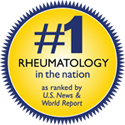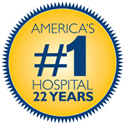Juvenile mysositis is a disease with the hallmark symptoms of muscle weakness and skin rash. The skin rash and weak muscles are caused by inflammation or swelling in the blood vessels under the skin and in the muscles.
JM patients may suffer from a generalized feeling of weakness in their muscles around the same time they see the skin rash, or the weakness may not be felt for a longer period of time.
The physicians at The Johns Hopkins Myositis Center do not evaluate children under 18 who have been diagnosed with myositis. However, we do treat patients who are older than 18, who have had myositis since they were children.
Risk Groups
Children from the ages of 5-15 are the primary patients of JM. JM affects 3-5,000 children in the United States.
Symptoms
- Trouble climbing stairs or moving from a standing to seated position; getting dressed
- patients may complain of being unable to rise from a low-seated chair or comb their hair
- Generalized fatigue
- Characteristic reddish-purple rashes of JM—Gottron’s papules (bumps found over the knuckles, elbows and knees) and heliotrope rash (purplish rash around the eyes)
- Hardened lumps or sheets of calcium (calcinosis) under the skin
- Difficulty in swallowing (dysphagia)
Diagnostic Tests
- Your doctor will ask for a complete medical history and will perform a thorough physical examination.
- Certain blood tests will be ordered and a muscle biopsy may be performed. The muscle biopsy is a minor procedure. A local anesthetic is applied and a small piece of muscle is removed -usually from a thigh muscle or shoulder muscle.
Treatment
Your doctor will most likely prescribe medications including corticosteroids and immunosupressants and will suggest ceratin physical exercises to help improve and maintain muscle strength.


